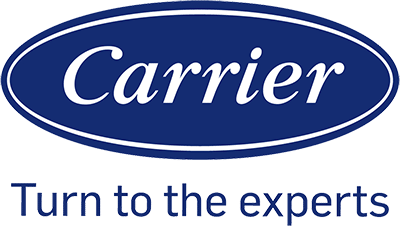Understanding Ductless Heating Systems
Ductless heating systems offer an efficient way to heat homes without traditional ductwork. They are commonly found in modern HVAC systems and have unique components and types.
Components and Operation
A ductless heating system typically includes an indoor unit and an outdoor unit. The indoor unit is often wall-mounted and blows heated air into the room. It contains a fan and an evaporator coil. The outdoor unit houses a compressor and a condenser coil. The two units are connected by refrigerant lines.
Mini-split heat pumps and ductless mini-split systems are popular forms of these heating systems. They can heat and cool spaces, offering flexibility and control. Remote controls or a thermostat help manage the temperature settings. These systems are ideal for homes without existing ductwork and can be added to individual rooms.
Types of Ductless Heating Systems
There are different types of ductless heating systems, including single-zone and multi-zone systems.
- Single-zone systems: These systems have one indoor unit connected to one outdoor unit. They are suitable for heating a single room or a small area.
- Multi-zone systems: These systems can connect multiple indoor units to a single outdoor unit. They are ideal for heating multiple rooms or larger spaces, allowing individualized temperature control in each zone.
Heat pumps are another type of ductless system. They work by transferring heat rather than generating it, making them energy-efficient. Each indoor unit can be controlled independently, providing customized comfort throughout the home.
Routine Maintenance and Prevention
Routine maintenance helps keep ductless heating systems running efficiently and can prevent costly repairs. Key areas to focus on include air filters, coils, drain lines, and regular professional check-ups.
Cleaning and Replacing Air Filters
Air filters should be cleaned or replaced regularly to maintain good air quality and system efficiency. Dirty filters can block airflow, making the system work harder. This can lead to higher energy bills and potential damage.
Dust, dirt, and debris can accumulate on filters. Cleaning them every month is a good practice. For replacement, refer to the manufacturer’s instructions. New filters are more effective at trapping dust, mold, and mildew, ensuring cleaner air.
Inspecting Coils and Drain Lines
The coils and drain lines need to be checked for dirt and clogs. The evaporator and outdoor coils are vital for heat exchange. Dirt on the coils can reduce efficiency and strain the system.
Condensate lines should be clear to allow water to drain. A clogged drain line can cause water damage and mold. Clean the coils and drain lines every few months. Look for signs of dirt, mildew, or mold.
Professional Maintenance Check-ups
An HVAC professional should inspect the system at least once a year. They can identify issues that aren’t visible and prevent them from becoming major problems.
A technician will check the coils, air filters, and condensate pump. They will also test the system’s overall performance and make any necessary adjustments. Regular professional maintenance ensures your system runs efficiently and extends its lifespan.
Troubleshooting Common Issues

When a ductless heating system malfunctions, it often involves refrigerant leaks, electrical problems, or performance issues. Here are methods to address these common challenges.
Identifying and Fixing Refrigerant Leaks
Frequent troubleshooting tips for refrigerant leaks involve checking for low refrigerant levels and seeking signs of frequent error codes. Low refrigerant can lead to poor temperature control and reduced airflow.
To identify leaks:
- Look for ice buildup on the indoor or outdoor units.
- Pay attention to unusual noises like gurgling.
To fix leaks:
- Ensure proper installation by a qualified technician.
- Use a leak detector to find the exact location of the leak.
- Recharge the system with the correct refrigerant.
Signs of low refrigerant:
- Ice formation on condenser coils.
- Water leakage due to condensation.
Resolving Electrical and Wiring Problems
Electrical issues can cause the ductless heating system to fail. Common problems include power supply interruptions, faulty communication wires, and tripped circuit breakers.
Troubleshooting steps:
- Check the circuit breaker to ensure it hasn’t tripped.
- Inspect electrical wiring for signs of wear and tear.
- Verify connections between the indoor and outdoor units.
Actions:
- Replace damaged wires to avoid electric shocks.
- Ensure power supply is consistent.
- Replace dead batteries in remote controls or thermostats.
Symptoms to watch for:
- Buzzing or rattling noises from electrical faults.
- System fails to turn on.
Restoring Optimal System Performance
Maintaining optimal performance involves regular checks and cleaning. Dust and debris can affect the system’s efficiency, causing it to either run too often or not enough.
Key steps:
- Regularly clean the air filters to prevent reduced airflow.
- Ensure the drain pan is clear to avoid water leakage.
- Adjust thermostat settings for accurate temperature control.
Common signs of performance issues:
- Reduced heating efficiency.
- Banging or screeching noises indicating mechanical wear.
Additional tips:
- Monitor the defrost cycle and reversing valve for correct operation.
- Address any unusual noises immediately to prevent further damage.
These steps ensure a well-functioning ductless heating system that maintains a comfortable indoor environment.




